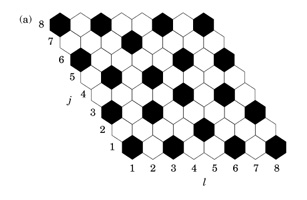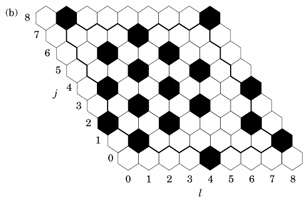 |
 |
Pattern formation by lateral inhibition with Feedback
In many developing tissues, adjacent cells diverge in character so as to create a fine-grained pattern of cells of contrasting states of diffentiation. It has been suggested that such patterns can be generated through lateral inhibition and lateral inhibition is well documented in flies, worms and vertebrates. In all these organisms, the transmembrane proteins Notch and Delta (or their homologues) have been identified as mediators of the interaction -- Notch as receptor, Delta as its ligand on adjacent cells.
In publication 85 we formulate the first (to our knowledge) mathematical model for Delta-Notch interaction and use a mixture of analysis and numerical simulation to determine precisely the conditions under which spatial pattern can be generated. We show that, not only can this system exhibit steady state spatial patterns, but also that such patterns arise through self-organisation stimulated by stochastic inhomogeneous fluctuations that are self-amplifying.
 |
 |
Diagram showing the steady-state pattern of primary (black) and secondary (white) fates in an (a) 8x8 and (b) 7x7 array of hexagonal cells. Primary fate is adopted by cells with high levels of Delta activity and low levels of Notch activity, while seconday fate is adopted by cells with low levels of Delta activity and high levels of Notch activity. [Reproduced with permission from publication 85].
** Work carried out in collaboration with J.R. Collier, N.A.M. Monk and J.H. Lewis